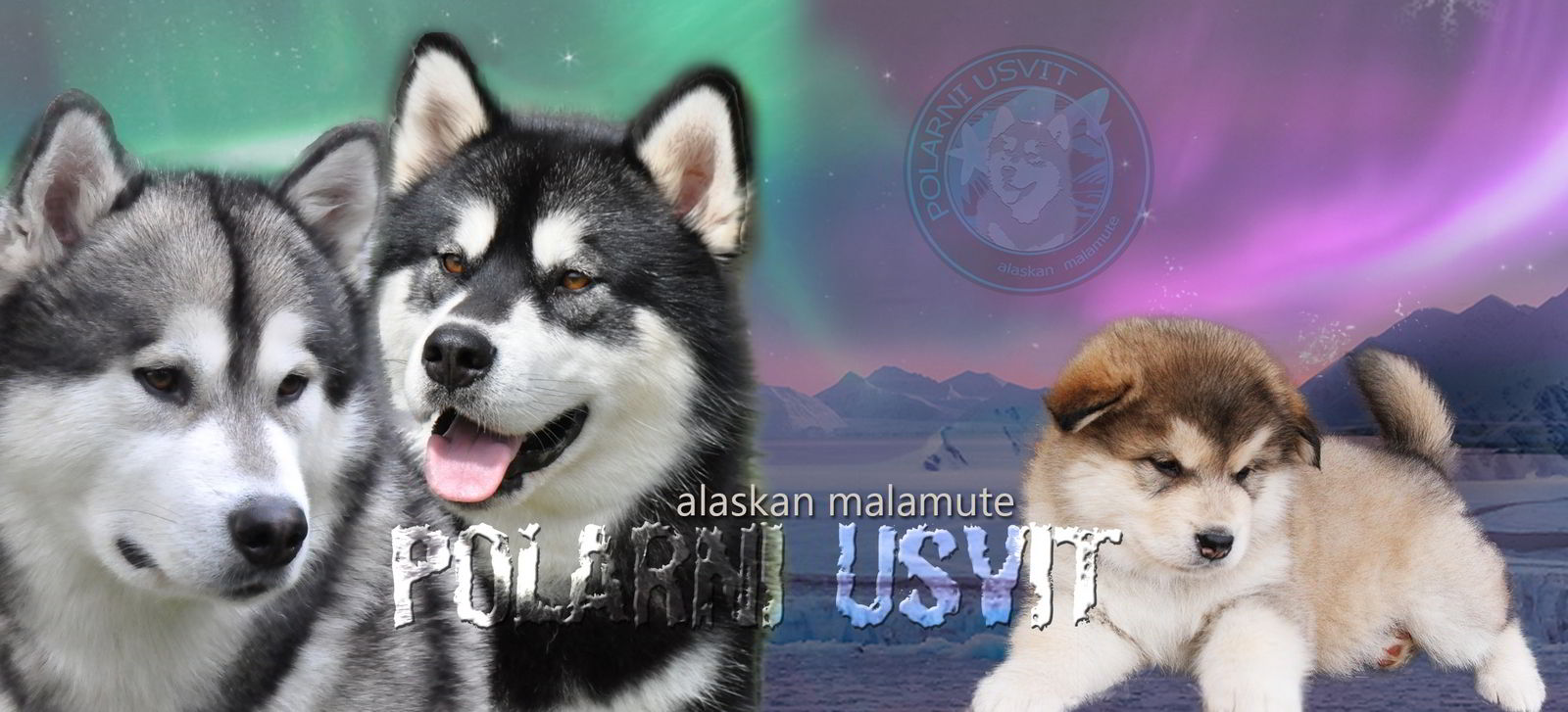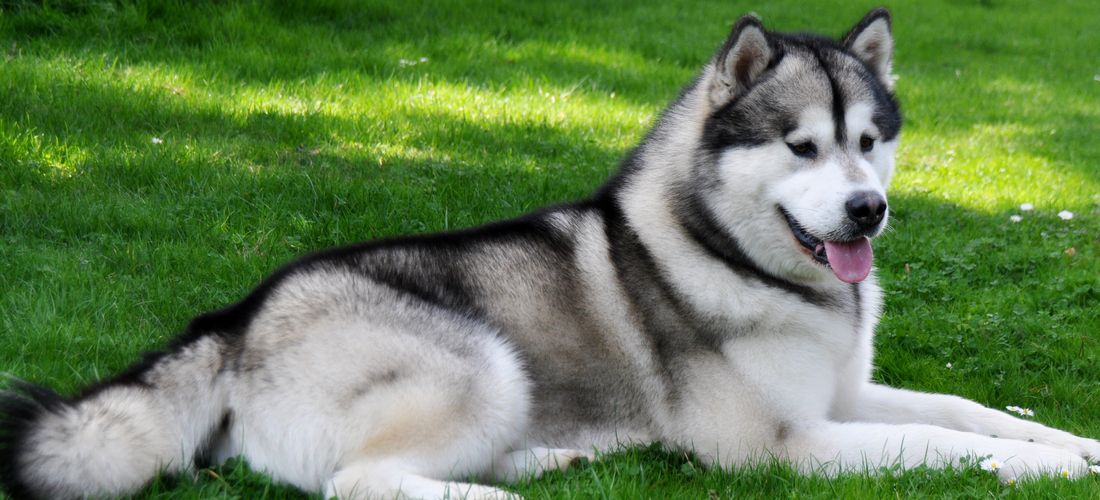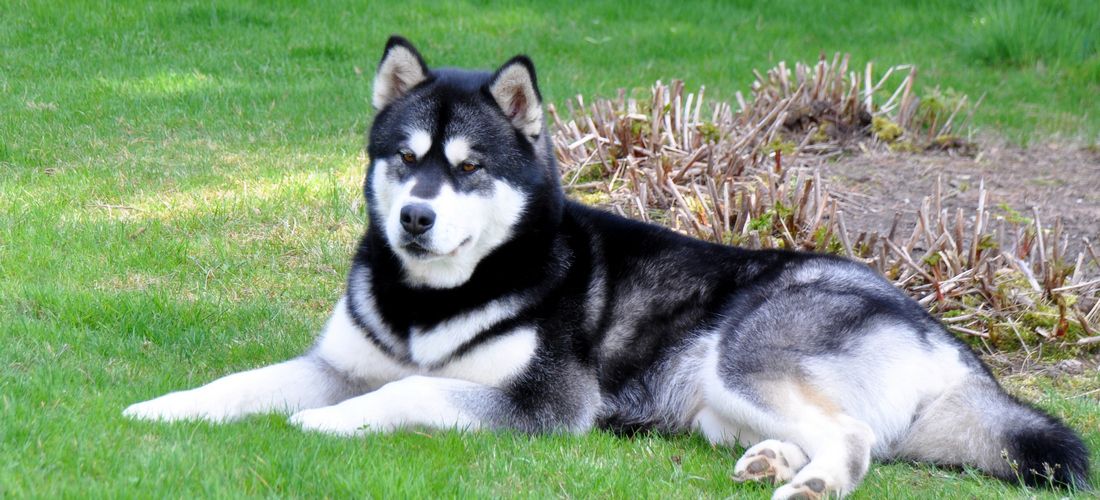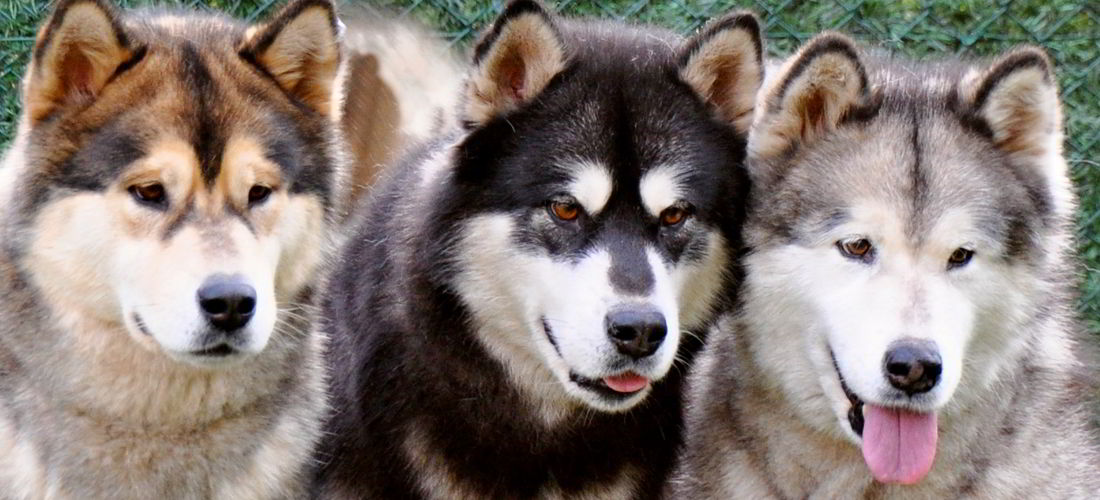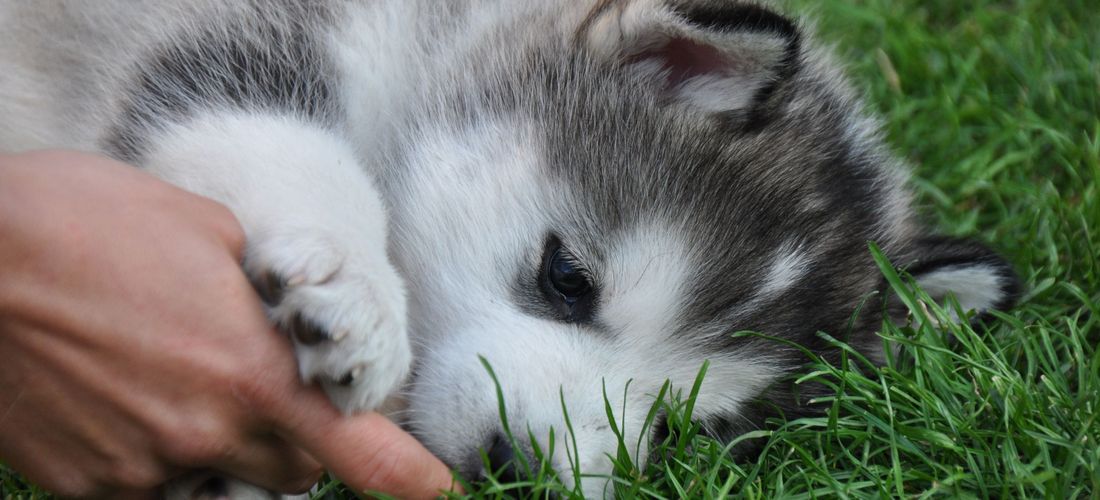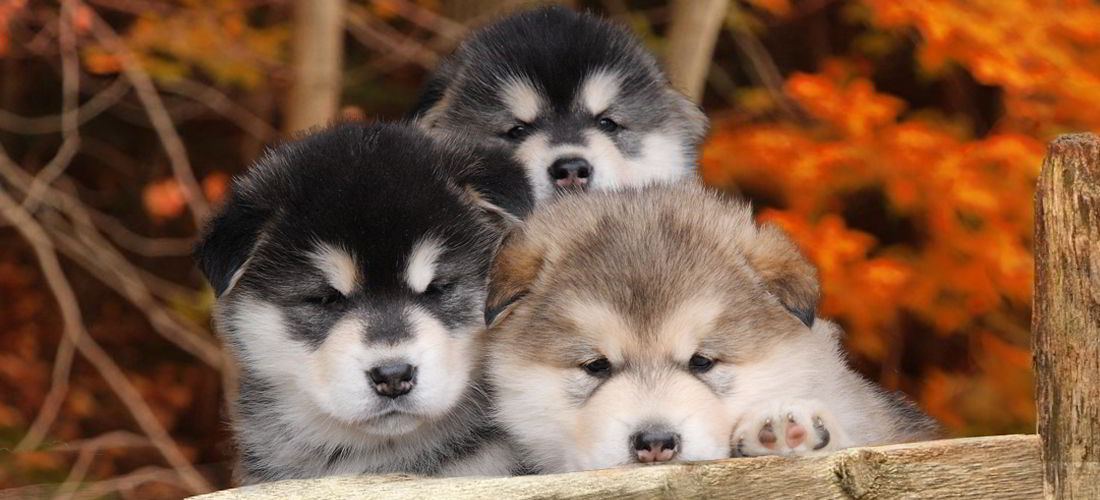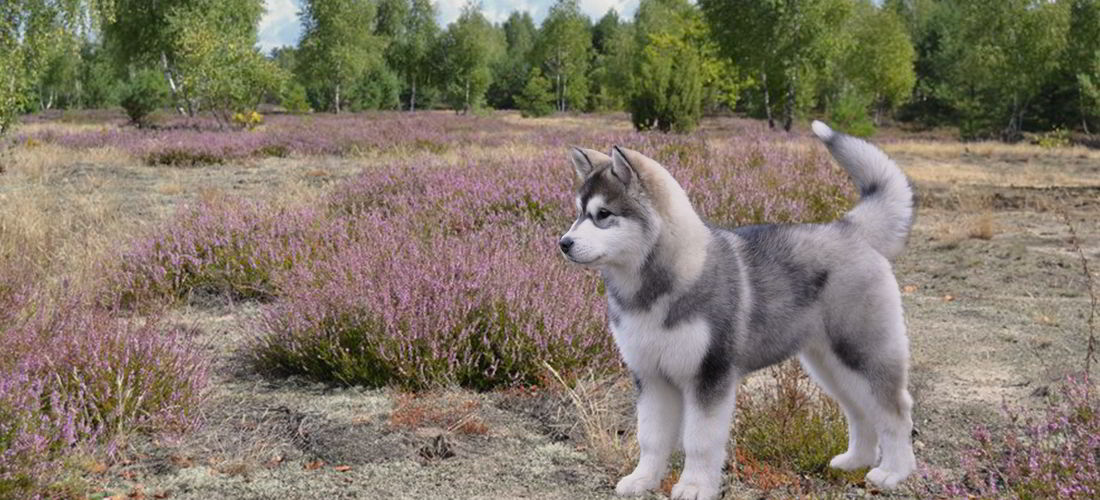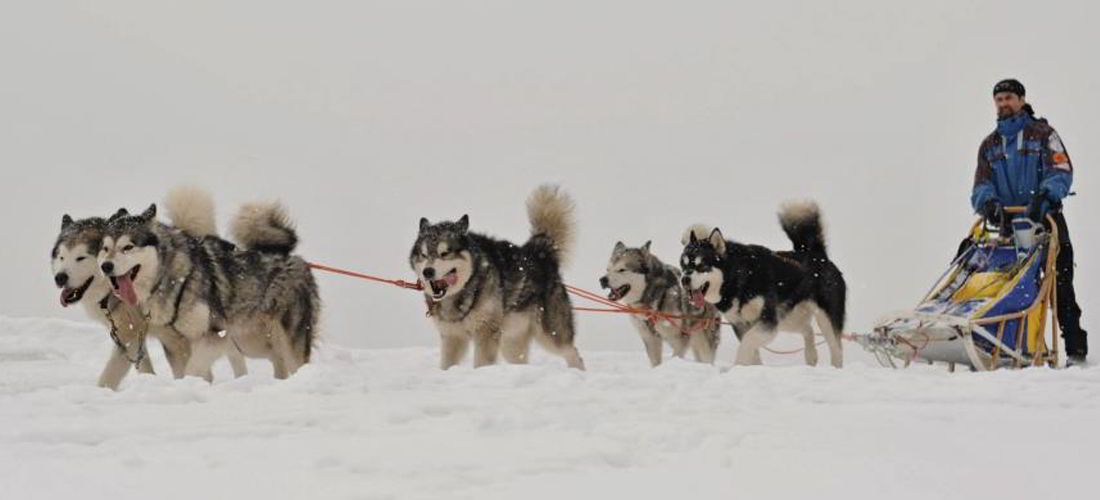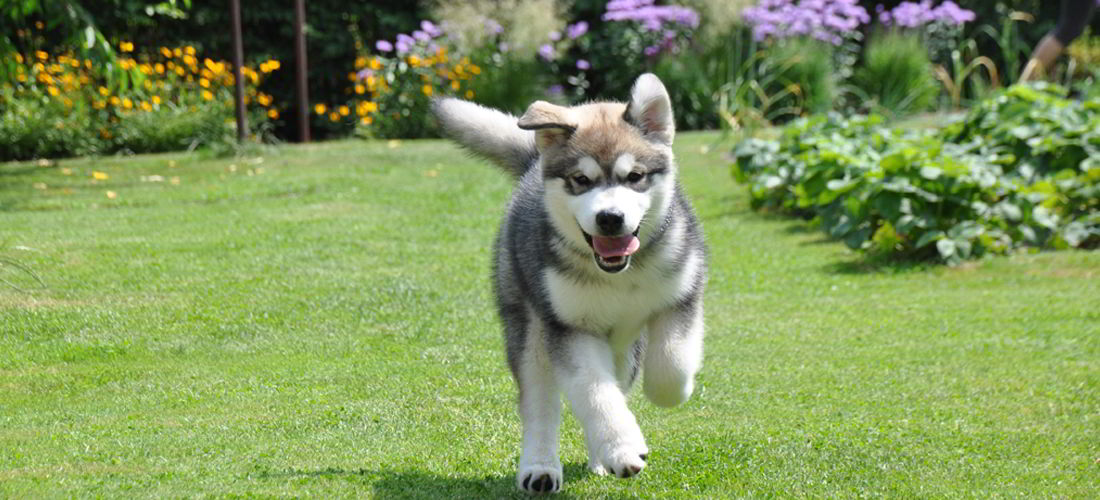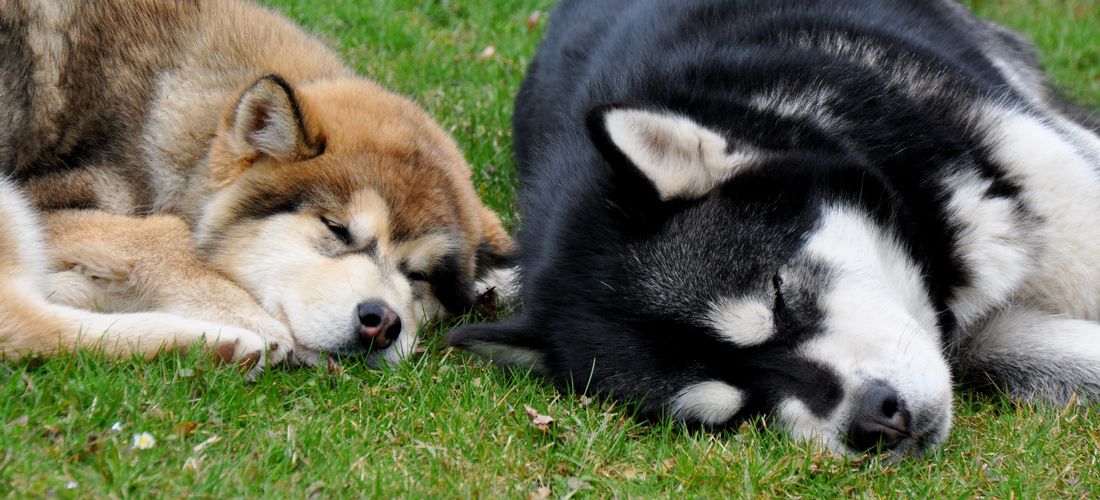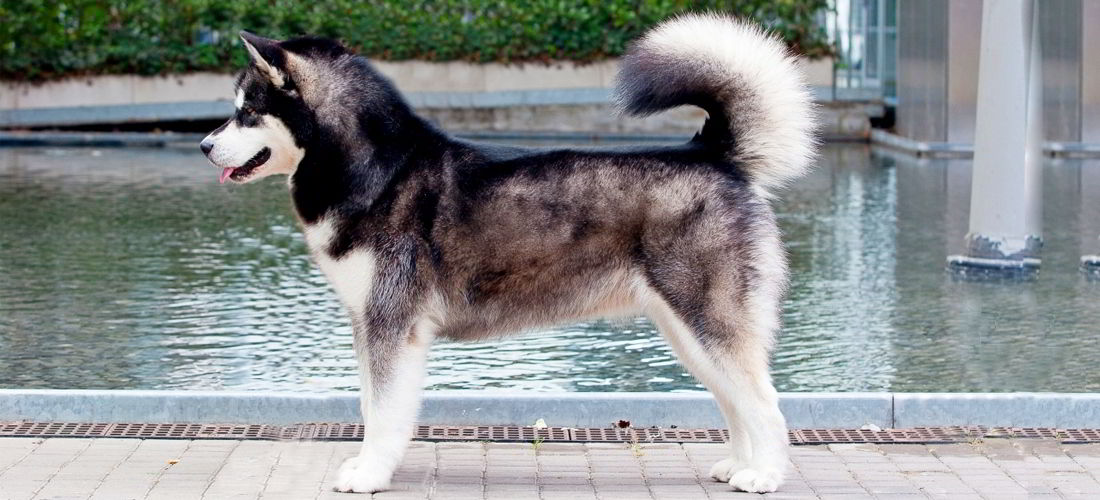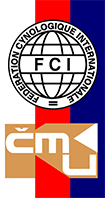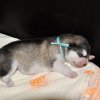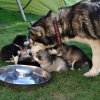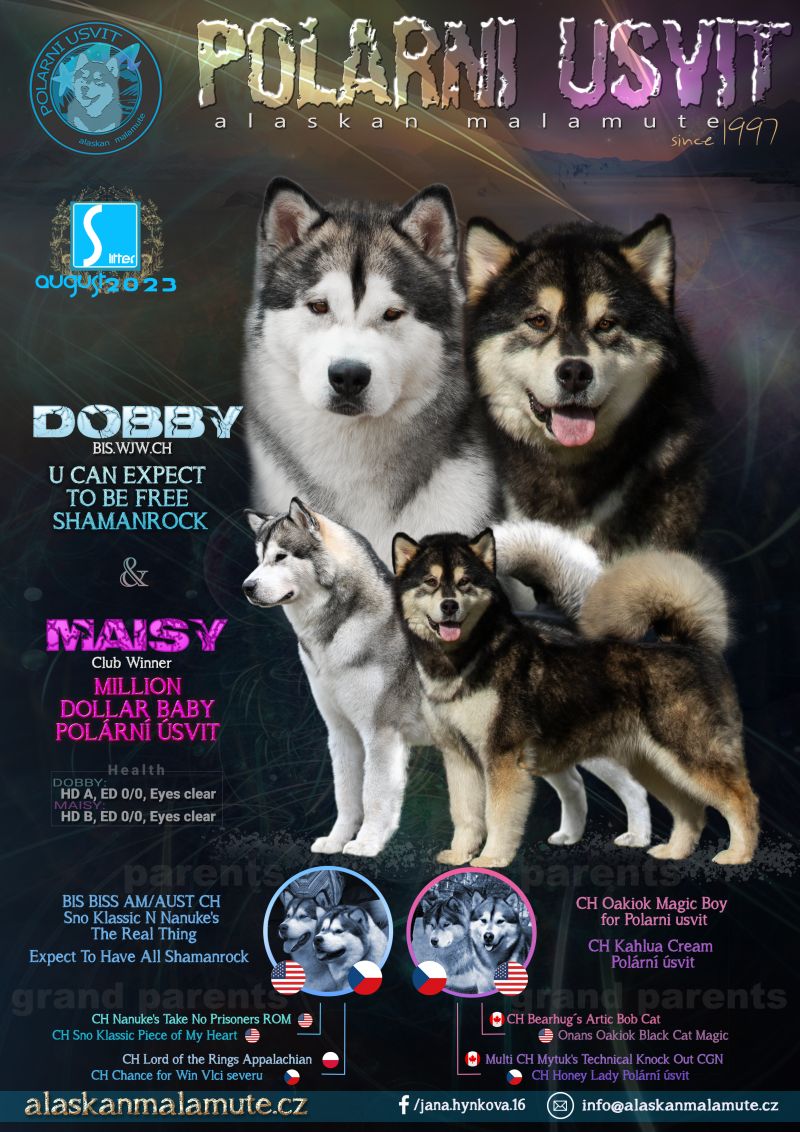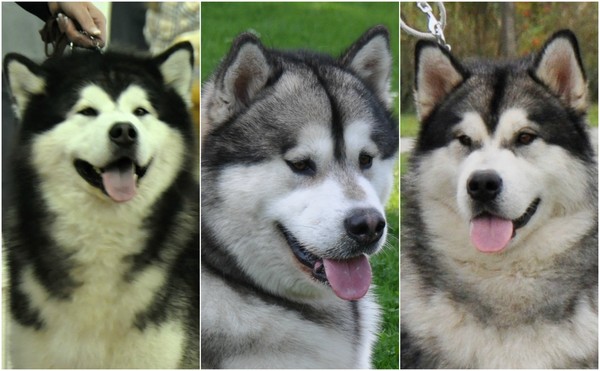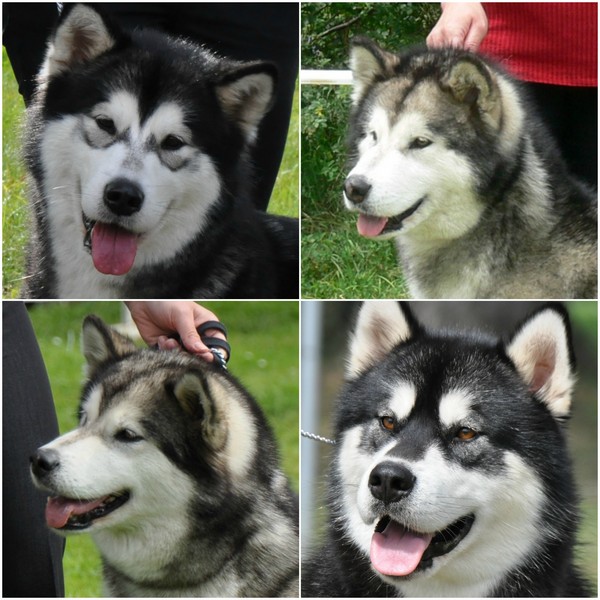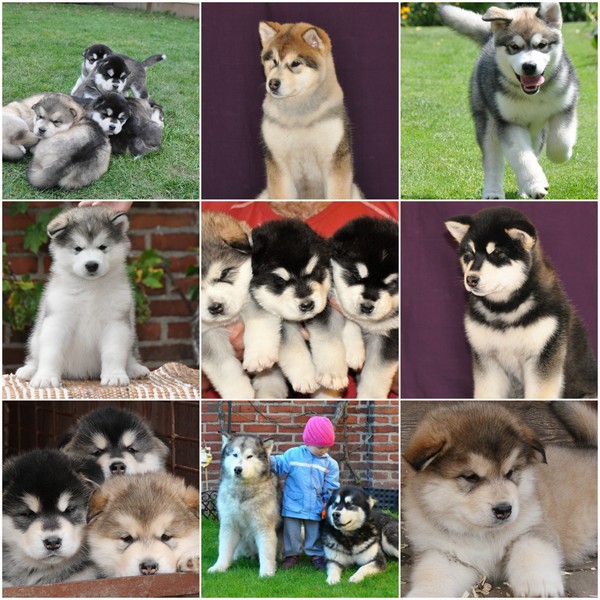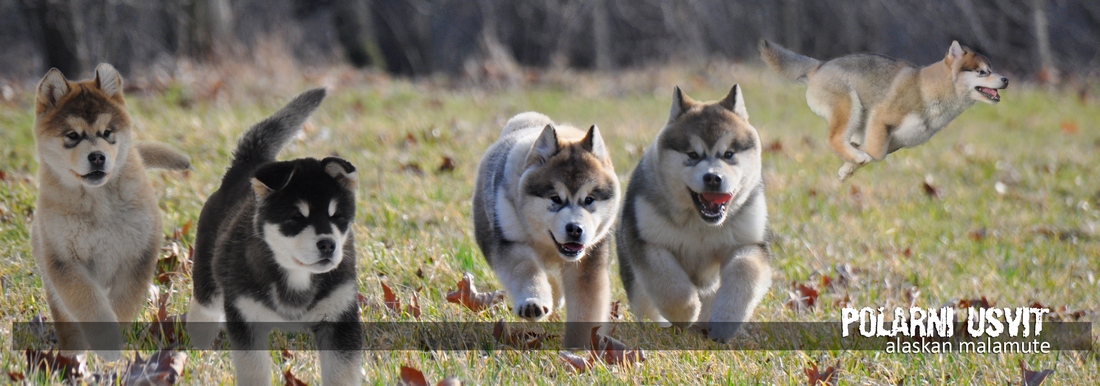POLARNI USVIT alaskan malamute
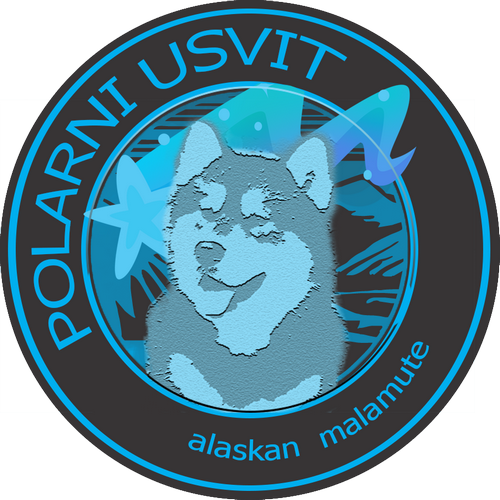
The Alaskan Malamute is a large breed of domestic dog (Canis lupus familiaris) originally bred for hauling heavy freight because of their strength and endurance, and later a sled dog. They are similar to other arctic breeds, such as the Greenland dog, Canadian Eskimo Dog, the Siberian Husky, and the Samoyed.
The American Kennel Club (AKC) breed standard describes a natural range of size, with a desired size of 23 inches (58 cm) tall and 75 pounds (34 kg) for females, 25 inches (64 cm) tall and 85 pounds (39 kg) for males. Heavier individuals (90 lb (41 kg)) and dogs smaller than 75 pounds (34 kg) are commonly seen. There is often a marked size difference between males and females.
The coat of the Alaskan Malamute is a double coat. The undercoat has an oily and woolly texture and can be as thick as two inches. The outer guard coat is coarse and stands off the body—longer at the withers but not more than one inch off the sides of the body. Ears are small in proportion to the head and stand firmly erect when at attention. The Alaskan Malamute is a heavy dog, with a more formidable nature and structure than the Siberian Husky, which is bred for speed. The Alaskan Malamute is bred for power and endurance, which is its original function and what the standard of the breed requires of Alaskan Malamute breeders.
The usual colors are various shades of gray and white, sable and white, black and white, seal and white, red and white, or solid white. There are a wide range of markings in the breed including face markings, blazes, a splash at the nape of the neck, and a collar or half collar. In terms of color variants, some Malamutes exhibit a dark grey to buff-colored undertone around their trimmings and white areas, presenting with a color-linked gene known as 'Agouti'. The eyes of the Alaskan Malamute are almond-shaped and are varied shades of brown; however, the darker eye is preferred. The physical build of the Malamute is compact and strong with substance, bone and snowshoe feet.
The Malamutes' well-furred tails aid in keeping them warm when they curl up in the snow. They are often seen wrapping the tail around their nose and face, which presumably helps protect them against harsh weather such as blowing snow. Their ears are generally upright, wedge-shaped, small in proportion to the head and set to the side of the skull. The muzzle is deep and broad, tapering slightly from the skull to the nose. Nose and gums are black but some Malamutes have a snow nose, which is black with a pink undertone that can get darker or lighter, depending on the season.
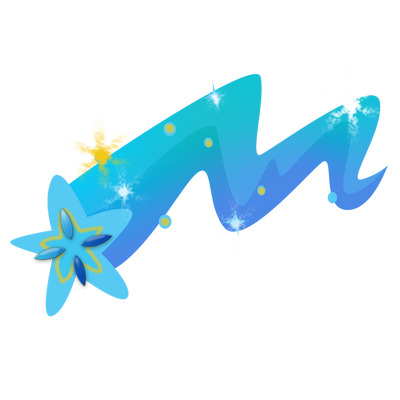
About us
I think that everyone who loves dogs has his or hers preference for the breed. My favorite breed is the Alaskan malamute. I chose this breed for its temperament, activity and affection for people. They aren’t the best guard dogs, but they love fun and activity, which should be the reason for people to select the company of this type of dog over other breeds. It is said, that whoever gets the dog from the North will never want another dog like that, or stays with this one forever. As for me the latter is the true.
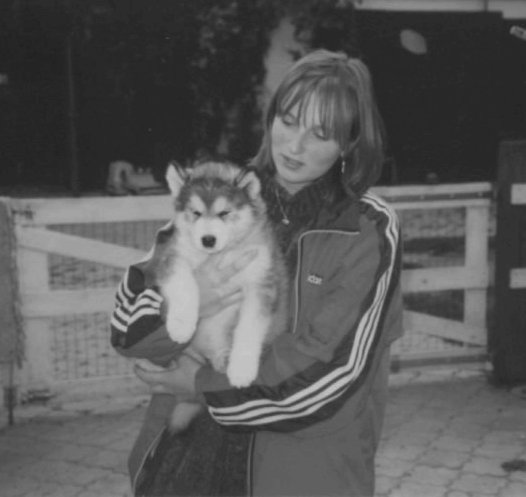 I got my first female malamute, “Cookie Kaskajetama” or so called Rita in 1995. At the time, I also had a horse, so Rita was my faithful companion and guide during my rides. I took the horse for a run on daily basis and Rita accompanied us every time. During the winter times, Rita followed us in the snow and she took cooling breaks in the river during the summer. She was the one who I took to the dog shows, joined the Northern Dogs Club with, and started to devote myself into a breeding of northern dogs. Within two years, Rita was pregnant, and I was looking forward to having her puppies. Unfortunately, Rita was not meant to be a mother, so I had to wait for my first puppy delivery little longer. During the time of waiting for Rita to breed, the kennel Polarni Usvit was founded in 1997.
I got my first female malamute, “Cookie Kaskajetama” or so called Rita in 1995. At the time, I also had a horse, so Rita was my faithful companion and guide during my rides. I took the horse for a run on daily basis and Rita accompanied us every time. During the winter times, Rita followed us in the snow and she took cooling breaks in the river during the summer. She was the one who I took to the dog shows, joined the Northern Dogs Club with, and started to devote myself into a breeding of northern dogs. Within two years, Rita was pregnant, and I was looking forward to having her puppies. Unfortunately, Rita was not meant to be a mother, so I had to wait for my first puppy delivery little longer. During the time of waiting for Rita to breed, the kennel Polarni Usvit was founded in 1997.
We had an addition of “Just Fur Fun Shamanrock” called Jessie in 2000. This time I wanted a male dog that I could use for the dog exhibitions, so I reached out to the family Seidl known for the dog breeding successes. I was so proud of my decision when I brought home the cute little fur ball that I immediately fell in love with. Jessie was a successful show dog which encouraged me to dive into the dog showing pursue. Two years later, we acquired a female dog, “Delightful Anny Inditarod” called Annie, so that we could take an additional dog to the dog exhibitions. Annie was the dog that helped us to start our own dog breeding because she had really beautiful puppies. The majority of Annie’s puppies are also taking part in the dog exhibitions as well as dog breeding in Czech Republic as well as in the foreign countries. We are still taking part in dog exhibitions all over Europe. We are regular attendants of the biggest exhibitions, such as European and World dog show if they are not too far. The biggest pride is our female “Aura Polarni usvit” from our fist litter. She became the InterChampion in her early age, and she is a Champion of seven countries today. She received a title “BOB” several times, which is quite an accomplishment for a female dog. Nowadays, I enjoy the dog exhibitions even more because I can be proud of my own dog’s accomplishments as well as the dogs that I bread and see exhibiting with their new owners. It is also very nice to embrace and cuddle with our puppies while we meet with their new owners at the dog exhibits.
Jak si koupit falešné ID na internetu
Nabízíme vysoce kvalitní ID evolvedfakeids.club za přijatelnou cenu. Každé ID je dodáváno s volným duplicitním a sledovacím číslem. Všechny identifikátory jsou naprogramovány tak, aby byly skenovány a projít testem podsvícení. A ... děláme víc než to! Nabízíme vám příležitost mít skvělé chvíle se svými přáteli! idsfun.comAll our three dogs are available to stud for approved bitches. They are successful in shows, but also excellent workhorses. More informations you find on the card for each of them, including health outcomes, show results, pedigrees and photo gallery .
OUR BOYS
Our bitches, or as we call home GIRLS, from the youngest to the oldest grandmother. Their exterior and nature is extremely important for us, after all it's the mother of our offspring. Mainly, however, the members of our household and partacky for our children.
OUR GIRLS
Look at the history of our puppies from the first litter in 2005. We usually one litter each year and bred puppy takes place in our heart. We strive for them to choose the best home and the owners require constant contact. There is no better reward than seeing a happy puppy living an active life in a loving family.
LITTERS
News Carousel
© 2024 Polární úsvit
